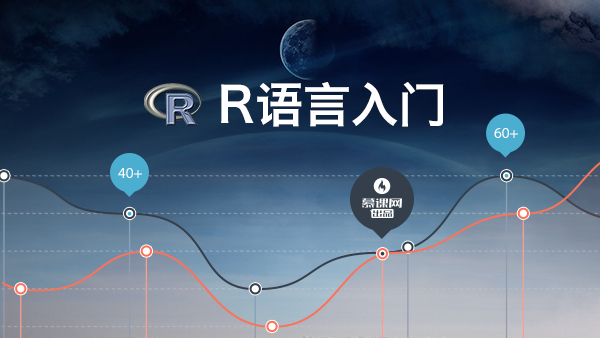Quantitative investment is an investment method based on mathematical models and statistical analysis, using data-driven approaches to identify market patterns and make decisions. This article provides a detailed introduction to the fundamental concepts, advantages and disadvantages, practical processes, common strategies, and programming examples of quantitative investment, as well as risk management techniques. The entire process of quantitative investment involves everything from strategy development to live trading, requiring a mastery of data analysis, programming, and risk control skills.
Fundamental Concepts of Quantitative Investment
Quantitative investment is a method that uses mathematical models and statistical analysis to guide investment decisions. It transforms the traditional decision-making process, which relies heavily on intuition and experience, into a scientific approach based on data analysis and algorithms. The core of quantitative investment lies in using data-driven methods to identify patterns in the market and make investment decisions based on these patterns.
Advantages and Disadvantages of Quantitative Investment
Advantages:
- Objectivity and Discipline: Quantitative investment uses algorithms to execute trades, reducing subjective interference and ensuring transaction discipline.
- Diversification: Multiple quantitative strategies can be run simultaneously, achieving diversification and risk dispersion.
- Efficiency and Low Costs: Automated trading systems can facilitate high-frequency trading and reduce transaction costs.
- Data-Driven: Quantitative investment relies on extensive data for analysis, uncovering hidden patterns and trends in the market.
- Risk Control: Risk can be managed through algorithms with strict stop-loss points and risk limits, ensuring that investment risks remain within control.
Disadvantages:
- Dependency on Models: Quantitative investment heavily relies on the effectiveness of models; if models become ineffective or the market environment changes significantly, strategies may fail.
- Overfitting: Models can suffer from overfitting, where they perform well on historical data but poorly in live trading.
- Market Efficiency: If the market is perfectly efficient, with all information already reflected in prices, it becomes challenging to achieve excess returns through quantitative investment.
- High Technical Requirements: Quantitative investment requires strong data analysis and programming skills, which may be a barrier for some investors.
- High Capital Requirements: Quantitative investment typically requires a significant amount of capital to support high-frequency trading, making it less applicable for small capital investors.
Basic Process of Quantitative Investment
The basic process of quantitative investment can be divided into the following steps:
- Market Research: Collecting and analyzing market data to understand market trends and patterns.
- Strategy Development: Formulating and writing quantitative trading strategies, usually based on historical data for backtesting and optimization.
- Live Trading Testing: Testing the strategy's performance in a simulated environment, assessing its effectiveness and stability.
- Risk Assessment: Evaluating the strategy's risk level, including metrics such as maximum drawdown and volatility.
- Strategy Deployment: Deploying the strategy into a live trading environment for real trading.
- Performance Evaluation: Regularly assessing the strategy's performance and making necessary adjustments and optimizations.
Introduction to Quantitative Investment Strategies
Understanding and choosing suitable quantitative investment strategies is a crucial part of getting started with quantitative investment. Strategies are designed through mathematical models and algorithms to capture market patterns and achieve excess returns.
Common Quantitative Investment Strategies
Common quantitative investment strategies include momentum strategies, mean reversion strategies, event-driven strategies, statistical arbitrage strategies, and more.
Momentum Strategies: These strategies are based on the inertia of the market, where the price trend of certain assets will continue for a period. By calculating the dynamic trend of asset prices, one can choose assets that are continuously rising or falling for trading.
Mean Reversion Strategies: The belief is that the market will return to a long-term average. If an asset's price deviates from its long-term average, one can profit by buying undervalued assets or selling overvalued ones.
Event-Driven Strategies: Utilize price fluctuations caused by specific market events (such as mergers, bankruptcy restructurings, etc.) to generate profits.
Statistical Arbitrage Strategies: Take advantage of price differences between different assets for arbitrage, such as utilizing differences between stocks and their derivatives.
Choosing Suitable Strategies
Choosing suitable quantitative strategies requires considering multiple factors, including personal investment goals, risk tolerance, and level of expertise.
- Investment Goals: Determine your investment goals, whether you aim for stable returns or high-risk, high-reward.
- Risk Tolerance: Different quantitative strategies have varying levels of risk, requiring you to choose a risk level that matches your tolerance.
- Expertise Level: Different strategies require different knowledge and skills, so choose strategies that match your knowledge level.
- Market Conditions: Different market conditions suit different strategies, such as momentum strategies performing better in strong markets.
Building a Simple Quantitative Strategy Model
Building a simple quantitative strategy model involves the following steps:
- Define Strategy Goals and Rules: Clearly define the strategy’s goals, such as seeking stable returns or high-risk, high-reward, and specify the strategy rules.
- Data Preparation: Collect and organize relevant market data, including prices and volumes.
- Feature Engineering: Process and transform the data, extracting useful features, such as calculating technical indicators.
- Strategy Backtesting: Use historical data to backtest the strategy and evaluate its effectiveness.
- Strategy Optimization: Adjust strategy rules and parameters to optimize performance.
- Risk Assessment: Evaluate the strategy's risk level to ensure its feasibility in live trading.
Example code is provided below, demonstrating a simple momentum strategy using Python:
import pandas as pd
import numpy as np
import matplotlib.pyplot as plt
def calculate_momentum(data, window=20):
"""
Calculate momentum indicator
"""
data['Momentum'] = data['Close'].pct_change(window)
return data
def simple_momentum_strategy(data, window=20):
"""
Simple momentum strategy: Buy assets with a 20-day momentum above the average
"""
data = calculate_momentum(data, window)
data['Signal'] = np.where(data['Momentum'] > data['Momentum'].mean(), 1, 0)
return data
def backtest(data):
"""
Backtest strategy
"""
data = simple_momentum_strategy(data)
data['Return'] = data['Close'].pct_change()
data['Strategy_Return'] = data['Return'] * data['Signal'].shift(1)
return data
# Example data
data = pd.read_csv('stock_data.csv')
data.index = pd.to_datetime(data['Date'])
data = data[['Date', 'Close']]
data = data.dropna()
# Backtest strategy
backtest_data = backtest(data)
# Visualize backtest results
plt.figure(figsize=(10, 5))
plt.plot(backtest_data['Close'], label='Close')
plt.plot(backtest_data['Strategy_Return'].cumsum(), label='Strategy Return')
plt.legend()
plt.show()
``
### Data Acquisition and Processing
Quantitative investment relies heavily on large amounts of data, including historical prices, volumes, financial statements, and more. Therefore, obtaining and processing this data is a crucial part of quantitative investment.
#### Common Data Sources and Acquisition Methods
Common data sources for quantitative investment include:
1. **Exchange Data:** Historical prices and volumes provided by exchanges such as the Shanghai and Shenzhen Stock Exchanges or the New York Stock Exchange.
2. **Third-party Data Providers:** Rich financial data provided by Yahoo Finance, Bloomberg, Wind, and more.
3. **Government Agency Data:** Market statistics provided by regulatory bodies such as the China Securities Regulatory Commission or the U.S. Securities and Exchange Commission.
4. **News and Social Media:** Utilizing news and social media data for sentiment analysis, obtaining market sentiment information.
Data acquisition methods include:
- **API Interfaces:** Using API interfaces to obtain data from third-party data providers.
- **Scraping Techniques:** Using programming languages like Python to write web scrapers to extract data from websites.
- **Database Queries:** Extracting data from databases, such as historical trading data from a MySQL database.
#### Data Cleaning and Preprocessing Tips
Data cleaning and preprocessing are essential steps in handling data, including:
- **Handling Missing Values:** Dealing with missing data by using the previous or next value, or interpolation methods.
- **Identifying and Handling Outliers:** Detecting and handling outliers through statistical methods.
- **Data Standardization:** Standardizing data using methods like z-score or min-max normalization.
- **Dealing with Duplicate Data:** Removing duplicate records to maintain data consistency.
- **Data Format Conversion:** Converting data into a uniform format, such as converting dates from strings to date format.
Example code is provided below, showing how to handle missing values using Python:
```python
import pandas as pd
# Prepare sample data
data = pd.read_csv('stock_data.csv')
data.index = pd.to_datetime(data['Date'])
data = data[['Date', 'Close']]
# Check missing values
print(data.isnull().sum())
# Fill missing values with the previous value
data['Close'].fillna(method='ffill', inplace=True)
# Check processed missing values
print(data.isnull().sum())Data Visualization Tools
Data visualization is a crucial tool for analyzing data, helping investors understand and analyze data better and discover market patterns and trends. Common data visualization tools include:
- Matplotlib: A popular plotting library in Python that can create various types of charts, such as line charts, bar charts, and scatter plots.
- Plotly: Provides rich interactive charts that support data exploration and interactive analysis.
- Seaborn: A high-level plotting library based on Matplotlib that provides various statistical charts, such as box plots and heatmaps.
- Tableau: A professional business intelligence tool that supports multidimensional and multilevel analysis.
- Power BI: A Microsoft business intelligence tool that supports data connection, report design, and data analysis.
Example code is provided below, showing how to use Matplotlib to plot stock price trends using Python:
import pandas as pd
import matplotlib.pyplot as plt
# Prepare sample data
data = pd.read_csv('stock_data.csv')
data.index = pd.to_datetime(data['Date'])
data = data[['Date', 'Close']]
# Plot stock price trend
plt.figure(figsize=(10, 5))
plt.plot(data.index, data['Close'], label='Close Price')
plt.title('Stock Price Trend')
plt.xlabel('Date')
plt.ylabel('Price')
plt.legend()
plt.show()Programming Languages and Tools
Programming languages and tools are the foundation of quantitative investment. Choosing the right programming language and tools can improve development efficiency and execution effectiveness.
Common Programming Languages and Their Characteristics
Common programming languages include Python, R, C++, and Java.
-
Python:
- Characteristics: Python has a simple syntax, making it easy to learn and use. It has numerous libraries and tools for data analysis and machine learning.
- Advantages: Rich libraries for data analysis (such as NumPy, Pandas, Scikit-learn) and visualization (such as Matplotlib, Seaborn).
- Disadvantages: Compared to other languages like C++ or Java, Python has slower execution speed.
-
R:
- Characteristics: R is primarily used for statistical analysis and data visualization, with a simple syntax designed specifically for data analysis.
- Advantages: Rich libraries for statistical models (such as ggplot2, lattice) and data analysis tools.
- Disadvantages: R is less efficient in handling large-scale data and computation compared to Python.
-
C++:
- Characteristics: C++ is an object-oriented programming language known for its high execution speed, suitable for high-performance computing.
- Advantages: An advantage in high-frequency trading, allowing for low-latency transactions.
- Disadvantages: A steeper learning curve due to its complex syntax.
- Java:
- Characteristics: Java is an object-oriented programming language with excellent cross-platform compatibility.
- Advantages: Can develop large-scale distributed systems, suitable for building complex quantitative trading platforms.
- Disadvantages: Compared to Python and R, Java has fewer libraries for data processing and analysis.
Common Quantitative Investment Development Tools
Common quantitative investment development tools include:
- Jupyter Notebook: Provides an interactive programming environment, facilitating code writing and sharing.
- PyCharm: A powerful Python integrated development environment, supporting code debugging and version control.
- Visual Studio Code: A feature-rich code editor supporting development in multiple languages.
- RStudio: A dedicated development environment for R, integrating code editing, debugging, and data analysis functions.
- NumPy/SciPy/Pandas: These libraries provide extensive data handling and scientific computing functions.
- QuantLib: An open-source financial library providing various financial models and tools.
- TA-Lib: Offers a wide range of technical analysis functions, facilitating technical analysis.
How to Use Python to Write Simple Quantitative Trading Strategies
Using Python to write simple quantitative trading strategies involves the following steps:
- Data Acquisition: Use Python libraries to obtain data from data sources.
- Data Processing: Clean and pre-process the acquired data.
- Strategy Development: Write the logic of the strategy, defining rules for buying and selling.
- Strategy Backtesting: Use historical data to backtest the strategy and evaluate its effectiveness.
- Strategy Optimization: Adjust the strategy parameters to optimize its performance.
Example code is provided below, illustrating a simple mean reversion strategy using Python:
import pandas as pd
import numpy as np
import matplotlib.pyplot as plt
def calculate_moving_average(data, window=20):
"""
Calculate moving average
"""
data['MA'] = data['Close'].rolling(window=window).mean()
return data
def simple_mean_reversion_strategy(data, window=20):
"""
Simple mean reversion strategy: Buy assets that deviate from the average
"""
data = calculate_moving_average(data, window)
data['Signal'] = np.where(data['Close'] < data['MA'], 1, 0)
return data
def backtest(data):
"""
Backtest strategy
"""
data = simple_mean_reversion_strategy(data)
data['Return'] = data['Close'].pct_change()
data['Strategy_Return'] = data['Return'] * data['Signal'].shift(1)
return data
# Sample data
data = pd.read_csv('stock_data.csv')
data.index = pd.to_datetime(data['Date'])
data = data[['Date', 'Close']]
data = data.dropna()
# Backtest strategy
backtest_data = backtest(data)
# Visualize backtest results
plt.figure(figsize=(10, 5))
plt.plot(backtest_data['Close'], label='Close')
plt.plot(backtest_data['Strategy_Return'].cumsum(), label='Strategy Return')
plt.legend()
plt.show()Practical Training and Backtesting
Practical training and backtesting are crucial components of quantitative investment. Through backtesting, one can evaluate the effectiveness and stability of strategies, providing a scientific basis for live trading.
How to Set Up a Backtesting Environment
Setting up a backtesting environment involves the following steps:
- Data Acquisition: Obtain historical trading data, including prices and volumes.
- Data Processing: Clean and pre-process the data to ensure completeness and accuracy.
- Strategy Development: Write the logic of the strategy, defining rules for buying and selling.
- Backtesting Platform: Use backtesting platforms or tools such as Backtrader, Zipline, PyAlgoTrade, etc.
Example code is provided below, showing how to set up a simple backtesting environment using Python:
import pandas as pd
import numpy as np
import backtrader as bt
# Prepare sample data
data = pd.read_csv('stock_data.csv')
data.index = pd.to_datetime(data['Date'])
data = data[['Date', 'Close']]
# Convert to Backtrader data format
class CustomData(bt.feeds.PandasData):
fromclose = True
lines = ('close',)
params = (
('datetime', 'Date'),
('close', 'Close')
)
data_feed = CustomData(dataname=data)
# Define strategy
class SimpleStrategy(bt.Strategy):
params = (
('window', 20),
)
def __init__(self):
self.ma = bt.indicators.SimpleMovingAverage(self.data.close, period=self.params.window)
def next(self):
if self.data.close < self.ma:
self.buy()
elif self.data.close > self.ma:
self.sell()
# Initialize backtesting environment
cerebro = bt.Cerebro()
cerebro.addstrategy(SimpleStrategy)
cerebro.adddata(data_feed)
# Run backtest
cerebro.run()
# Output backtest results
print(f"Final Portfolio Value: {cerebro.broker.getvalue()}")How to Backtest and Evaluate Strategies
Backtesting strategies should evaluate the following aspects:
- Return Performance: Calculate the cumulative return and annualized return of the strategy.
- Risk Metrics: Calculate risk metrics such as maximum drawdown and Sharpe ratio.
- Trading Performance: Calculate metrics such as the number of trades and win rate.
- Strategy Stability: Assess the stability of the strategy through segment backtesting and parameter adjustments.
Example code is provided below, showing how to calculate the cumulative return and annualized return of the strategy using Python:
import pandas as pd
import numpy as np
def backtest(data):
"""
Backtest strategy
"""
# Simple strategy: Buy and hold
data['Return'] = data['Close'].pct_change()
data['Strategy_Return'] = data['Return']
return data
# Sample data
data = pd.read_csv('stock_data.csv')
data.index = pd.to_datetime(data['Date'])
data = data[['Date', 'Close']]
data = data.dropna()
# Backtest strategy
backtest_data = backtest(data)
# Calculate cumulative return
cumulative_return = (1 + backtest_data['Strategy_Return']).cumprod().iloc[-1] - 1
print(f"Cumulative Return: {cumulative_return:.2%}")
# Calculate annualized return
annual_return = ((1 + cumulative_return) ** (252 / len(data)) - 1) * 100
print(f"Annualized Return: {annual_return:.2f}%")How to Optimize and Adjust Strategy Parameters
Optimizing and adjusting strategy parameters is an important method to improve strategy performance, which can be done through:
- Grid Search: Traverse multiple possible parameter values to find the optimal combination.
- Random Search: Randomly select a set of parameters from the parameter space for testing.
- Genetic Algorithm: Use genetic algorithms to optimize parameters, simulating the natural selection process.
- Bayesian Optimization: Use Bayesian optimization to optimize parameters, building a probabilistic model for optimization.
Example code is provided below, demonstrating how to use grid search to optimize strategy parameters using Python:
import pandas as pd
import numpy as np
from itertools import product
# Prepare sample data
data = pd.read_csv('stock_data.csv')
data.index = pd.to_datetime(data['Date'])
data = data[['Date', 'Close']]
data = data.dropna()
def backtest(data, window):
"""
Backtest strategy
"""
data['Momentum'] = data['Close'].pct_change(window)
data['Signal'] = np.where(data['Momentum'] > 0, 1, 0)
data['Return'] = data['Close'].pct_change()
data['Strategy_Return'] = data['Return'] * data['Signal'].shift(1)
return data['Strategy_Return'].sum()
# Define parameter range
windows = [10, 20, 30, 40, 50]
# Grid search
best_window = None
best_return = -np.inf
for window in windows:
strategy_return = backtest(data, window)
if strategy_return > best_return:
best_return = strategy_return
best_window = window
print(f"Best Window: {best_window}")
print(f"Best Return: {best_return}")Risk Management and Live Trading
Risk management is a crucial aspect of quantitative investment. By employing scientific methods to manage risk, one can reduce investment risk and enhance returns.
Risk Management Strategies in Quantitative Investment
Common risk management strategies include:
- Capital Management: Control the allocation of funds by setting the proportion of capital for each trade.
- Stop Loss: Set a stop-loss point, automatically closing positions when prices reach the stop-loss point.
- Risk Limits: Set maximum risk limits, such as maximum drawdown limits.
- Diversification: Reduce risk through diversified investments, such as investing in multiple assets or strategies.
- Market Risk Hedging: Hedge market risk through derivatives such as futures and options.
Example code is provided below, demonstrating a simple stop-loss setting using Python:
import pandas as pd
import numpy as np
def backtest_with_stop_loss(data, stop_loss_percentage):
"""
Backtest strategy with a stop-loss point
"""
data['Return'] = data['Close'].pct_change()
data['Strategy_Return'] = 0
current_position = 0
stop_loss = 0
for i in range(1, len(data)):
if current_position == 0:
if data['Return'].iloc[i] > 0:
current_position = 1
stop_loss = data['Close'].iloc[i] * (1 - stop_loss_percentage)
elif current_position == 1:
if data['Close'].iloc[i] < stop_loss:
current_position = 0
else:
data['Strategy_Return'].iloc[i] = data['Return'].iloc[i]
return data['Strategy_Return'].sum()
# Sample data
data = pd.read_csv('stock_data.csv')
data.index = pd.to_datetime(data['Date'])
data = data[['Date', 'Close']]
data = data.dropna()
# Set stop-loss point
stop_loss_percentage = 0.05
best_return = backtest_with_stop_loss(data, stop_loss_percentage)
print(f"Best Return with Stop Loss: {best_return}")
``
#### How to Apply Strategies to Live Trading
Applying strategies to live trading involves the following steps:
1. **Strategy Deployment:** Deploy the strategy to a live trading platform, such as through API interfaces for trading.
2. **Real-time Monitoring:** Monitor the execution of the strategy in real-time, including price and volume information.
3. **Trade Execution:** Execute trades based on the strategy signals.
4. **Risk Management:** Monitor risk metrics in real-time to ensure trading remains within controlled risk levels.
Example code is provided below, showing how to deploy a simple strategy to live trading using Python:
```python
import pandas as pd
import numpy as np
import backtrader as bt
class CustomData(bt.feeds.PandasData):
fromclose = True
lines = ('close',)
params = (
('datetime', 'Date'),
('close', 'Close')
)
# Prepare sample data
data = pd.read_csv('stock_data.csv')
data.index = pd.to_datetime(data['Date'])
data = data[['Date', 'Close']]
data = data.dropna()
data_feed = CustomData(dataname=data)
# Define strategy
class SimpleStrategy(bt.Strategy):
params = (
('window', 20),
)
def __init__(self):
self.ma = bt.indicators.SimpleMovingAverage(self.data.close, period=self.params.window)
def next(self):
if self.data.close < self.ma:
self.buy()
elif self.data.close > self.ma:
self.sell()
# Initialize backtesting environment
cerebro = bt.Cerebro()
cerebro.addstrategy(SimpleStrategy)
cerebro.adddata(data_feed)
# Run backtest
cerebro.run()
# Output backtest results
print(f"Final Portfolio Value: {cerebro.broker.getvalue()}")Notes and Recommendations for Live Trading
In live trading, it is important to pay attention to the following:
- Capital Management: Strictly control the allocation of funds, avoiding the concentration of all funds in a single strategy or asset.
- Risk Management: Set strict stop-loss points and risk limits to ensure trading risk remains within controlled levels.
- Real-time Monitoring: Monitor trade execution in real-time, including price and volume information.
- Strategy Adjustment: Adjust strategy parameters in real-time based on market changes to optimize performance.
- Market Rules: Familiarize yourself with the rules and restrictions of the trading market to comply with trading rules.
By following these methods, one can effectively manage risks in live trading, enhancing the stability and success rate of trading.

 随时随地看视频
随时随地看视频




